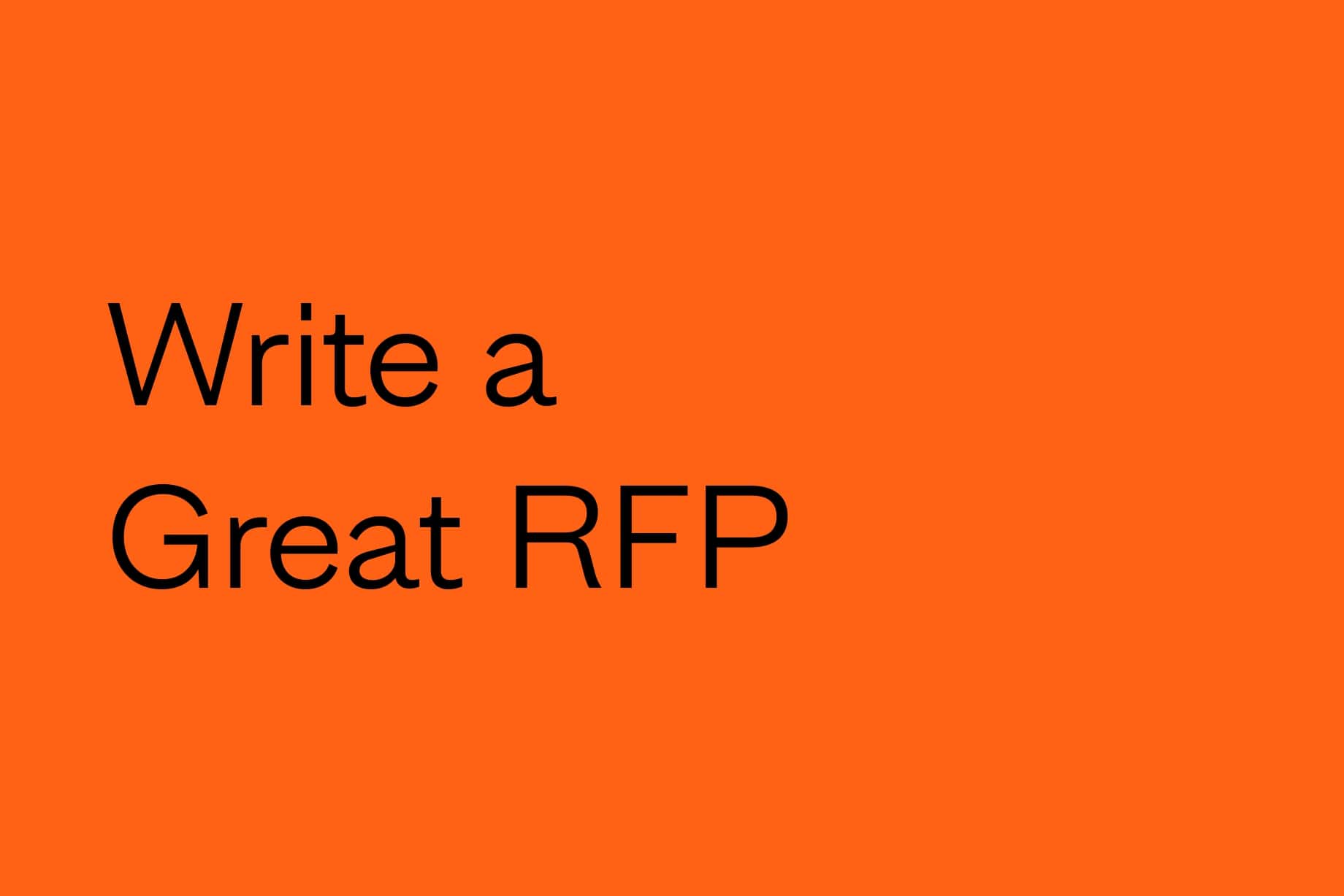Light
Listen to this Article
-
00:00 | 00:00
No matter what kind of RFP you’re writing, our template is designed to save you time and help you evaluate and choose the best partner.
Mastering the RFP Process
Writing a Request For Proposal is no easy task. With no standard proposal template and heaps of information to consider, the RFP process can feel daunting and confusing, full of roadblocks and threats to your project timeline. Challenges withstanding, it’s important to get it right. The quality of your RFP has a direct impact on the quality of your project goals and final deliverables — for better or for worse.
After decades of reviewing hundreds of the best RFPs from the world’s biggest and most well-loved brands, we’ve documented the specific requirements — the ideal formats, context, and upfront information — that elicit solid proposals and ensure clear communication throughout the procurement process.
In this guide, you’ll find a detailed checklist and example template to help you, your team members and any other stakeholders create your next RFP. The prompts and formatting are intentionally designed to help you make “apples to apples” comparisons with insights partners, save time on feedback rounds, and ultimately land on the right partner, project overview, and scope of work to meet your needs.
Before You Write Your RFP: Some Thought Starters
How much flexibility do you want to give potential bidders?
Often, we see RFPs asking for methodological suggestions when the client already has specific elements in mind. The more up front you can be, the more likely bidders are to hit the nail on the head the first time around.
Are your goals realistic for your budget?
We invest time and energy to use resources wisely, but the budget needs to fit the scope of work. “Understanding the future of women’s style” isn’t a 2-week project with a $50k investment. Consider doing some initial research on average costs to make sure you’re allocating enough budget, and be prepared to pay for good thinking.
Think more about end result than process.
From the goals to the precise deliverables to implementation, think through what your expectations of the agency are for the end result — and consider letting them guide how you get there.
Consider co-scoping.
If you already have an agency in mind, consider co-scoping the engagement so there’s absolute buy-in on the selection process from both sides at the outset.
Dig deep to understand what’s been done before.
In most organizations, insights aren’t centrally located in a repository. It can lead to studies — or parts of studies — being repeated, or projects starting broad when they could be more narrow. To get the most out of your budget, take a look around to see what exists before crafting your RFP.
What You’ll Learn
- Insights into what elements, qualities, and metrics make a good RFP document successful;
- A detailed checklist of what to put in your RFP, including relevant background information, specific project requirements, and desired timeframe and milestones, plus evaluation criteria, contact information, and other key points;
- A sample RFP template to help guide your workflow as you create your own,
- Prompts and selection criteria designed to help you make “apples to apples” comparisons of bidders and potential vendors,
- Insights to save you time and help you select the right partner/project design for your needs (whether you need insights, analytics, brand marketing, product design, growth strategy, loyalty & CRM, and more!)

